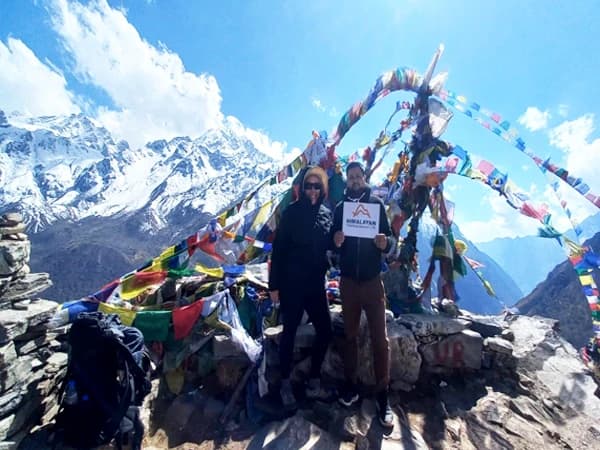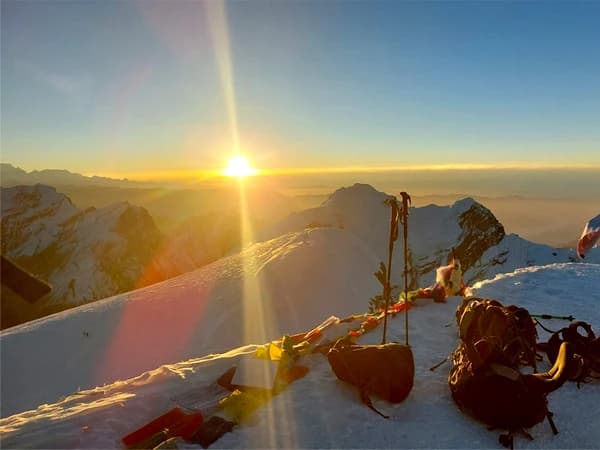Importance of Trekking Gear
Trekking gear is essential for ensuring safety, comfort, and preparedness during a trek. Whether you're trekking through mountains, forests, or remote trails, the right equipment can make a significant difference in your experience.
Firstly, proper gear protects you from environmental hazards. Weather in trekking regions can change quickly, and items like waterproof jackets, insulated clothing, and sturdy boots protect against rain, cold, and rough terrain. Trekking poles and backpacks with good support reduce physical strain and help maintain endurance over long distances.
Secondly, safety is a key reason for carrying the right gear. First aid kits, headlamps, and navigation tools such as maps or GPS devices are vital for emergencies, especially in remote areas. Hydration systems and water filters ensure access to clean water, which is critical for health and energy.
Moreover, good gear enhances convenience and efficiency. Lightweight, moisture-wicking clothes keep you comfortable, while compact cookware and multi-tools save space and add functionality. Responsible trekking gear, like reusable bottles and biodegradable toiletries, also helps minimize environmental impact.
In short, trekking without the proper gear can be risky and uncomfortable. Quality equipment ensures you’re well-prepared, making your adventure safer, more enjoyable, and environmentally friendly.
Essential Trekking Gear List
When preparing for a trek, having the right gear is critical to ensure safety, comfort, and enjoyment. Here's a detailed list of essential trekking gear:
Backpack
- Choose a durable, lightweight backpack (40–60 liters for multi-day treks) with padded straps, a hip belt, and good ventilation. Look for rain covers and compartments for organization.
Clothing
- Base Layer: Moisture-wicking thermal tops and bottoms.
- Mid Layer: Insulating fleece or down jacket for warmth.
- Outer Layer: Waterproof and windproof jacket and pants.
- Trekking Pants: Quick-dry, breathable pants.
- Shirts: Lightweight, moisture-wicking t-shirts or long-sleeved.
- Undergarments: Quick-dry and comfortable underwear.
- Socks: Wool or synthetic trekking socks (multiple pairs).
- Gloves: Warm and waterproof gloves.
- Hat/Cap: Sun hat for daytime; beanie or wool cap for cold.
Footwear
- Trekking Boots: Sturdy, waterproof, and broken-in hiking boots with good ankle support.
- Camp Shoes/Sandals: For relaxing at camp and water crossings.
Sleeping Gear
- Sleeping Bag: Appropriate for the season and altitude (check temperature ratings).
- Liner: best for comfortable sleep
Navigation & Lighting
- Map and Compass: Essential for remote treks.
- GPS Device or App: Handy for route tracking.
- Headlamp: With extra batteries for hands-free lighting.
Hydration and Nutrition
- Water Bottles/Hydration Bladder: Minimum 2-liter capacity.
- Water Purifier/Filter: To treat natural water sources.
- Snacks/Energy Bars: High-calorie, lightweight food.
Personal Items
- First Aid Kit: Include basic medicines, blister pads, antiseptics.
- Sunscreen and Lip Balm: SPF 30+ recommended.
- Toiletries: Biodegradable soap, toothbrush, toothpaste, and wet wipes.
- Trekking Poles: For balance and joint support.
- Trash Bags: Pack out all waste.
Optional but Useful
- Gaiters: Protect from mud, snow, and leeches.
- Crampons: Perfect for a high pass trek (Three Pass Trek, Annapurna Circuit Trek, Manaslu Circuit Trek, & Kanchenjunga Trek)
- Camera or Binoculars: For photography and wildlife spotting.
- Notebook & Pen: To jot down notes or journal the journey.
Proper planning and the right gear can transform your trek from a struggle into an unforgettable adventure. Always consider the climate, altitude, and duration of your trek when choosing your equipment. Contact Himalayan Trekking Path Pvt. ltd, if you need any further information to prepare your upcoming trek in Nepal.



